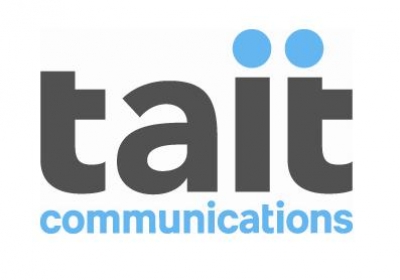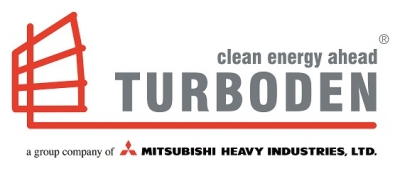 For years the Utility Industry has depended on the reliability of Land Mobile Radio systems to support their most mission critical responsibility, public and employee safety. Land mobile radio systems are the lifeline between system operations and their field crews that are working in one of the most dangerous environments in our communities.
For years the Utility Industry has depended on the reliability of Land Mobile Radio systems to support their most mission critical responsibility, public and employee safety. Land mobile radio systems are the lifeline between system operations and their field crews that are working in one of the most dangerous environments in our communities.
Working around power lines that carry anywhere from 110 to 345,000 volts is dangerous business. When storms occur and power lines are on the ground or sparking dangerously overhead, it’s the utility worker that must quickly identify and isolate hazards so that repairs can be made and power can be safely and promptly restored.
Historically, these voice systems played a much more significant role in everything from dispatching work orders to meter reading to constructions crews. Now, with workforce automation solutions, such as automated data dispatch, most field communications are over carrier networks, delivering digital work orders to laptops, tablets and smart phones. The utilization of the LMR system has declined dramatically, along with its perceived value to the business. That all changes when an outage event occurs and their land mobile radio system again becomes the center of the assessment and restoration activities.
Let’s not kid ourselves, these systems are expensive, and their perceived value to the industry is diminishing. This is where the DMR standard steps into the conversation, as it provides two key business values that are undeniable.
First, it enables a Utility to optimize the value of a “must have” investment in critical voice communications.
Secondly, it enables a utility to minimize future capital investments and operating expenses related to private broadband, MESH and carrier services.
To be clear, DMR is not a silver bullet for Smart Grid communications, or for distribution automation and SCADA. It is simply a tool that utilities already must invest in, and it can now support a fair number of SCADA and Telemetry use cases that can tolerate latencies of up to 1.5 seconds and work within its limited bandwidth. Not very impressive when compared to 3G/4G performance, but quite impressive when you consider there is minimal to no associated operating expenses, the link and end point can be monitored, managed, and correlated with grid events, and utilities will be able to distinguish between a communications outage and an electrical one, and it is all performed over a network already designed for mission critical applications.
Let’s take a closer look at these two undeniable business value statements concerning DMR.
DMR helps the utility industry Optimize the Business Value of Land Mobile Radio Capital Investments.
- DMR more than doubles the capacity of legacy systems through the use of time division multiple access and packet data, delivering two voice or data for each licensed 12.5 KHz channel.
- The DMR standard is open and supports interoperability with other DMR compliant original equipment manufacturers, providing the opportunity for vendor diversity and competitive market driven pricing.
- DMR can provide SCADA and Telemetry Communications anywhere within the Land Mobile Radio coverage that can tolerate its bandwidth and latency characteristics.
- DMR supports Quality of Service and committed bandwidth allocation for priority traffic, whether it is voice or data.
- DMR requires no additional communication sites; it is the only digital LMR standard for Voice and Data that was designed to match the legacy coverage footprint.
DMR helps utilities Minimize Capital Investments and Operating Expenses for field area communications.
- By optimizing the business value of land mobile radio, a utility will be able to minimize their investment in private broadband, allowing targeted deployment for high bandwidth, lower latency use cases.
- In addition, utilities that want to utilize their advanced metering mesh radio systems can do so judiciously, minimizing the added complexity and performance variability inherent to mesh systems.
- Finally, and most importantly, utilities can minimize the rapid growth in operating expenses by leveraging infrastructure that is already managed and supported. By utilizing the DMR system for SCADA and Telemetry in addition to its voice application, utilities can use less carrier services; more fully utilize their existing service management capabilities and optimize both capital and operating expenses.
In closing, the DMR standard was developed with utilities in mind. Its’ mission critical design is capable of supporting critical use cases beyond voice. When fully utilized, it provides a path to a higher return on investment for Land Mobile Radio Systems, and a tool to minimize growing operating expenses and minimize of capital investments in private broadband.
Want to learn more? Register for Tait Communications webinar ‘Crossroads in Grid Automation and M2M’ live on the 1st of July at 10AM New York / 3PM London

 Philip Mullins,
Philip Mullins, Since late ‘90s renewable energy has been living a boom that would have shaped the future of the power sector in Europe and in the rest of the world. Renewable sources, specifically bioenergy, solar, wind and geothermal energy have been on the verge of a boom that proved to be even almost uncontrolled in many countries. Renewable sources gained public awareness while few players and few countries started opening possibilities and granting incentives (or specific regulation) to boost the industrial footprint overall efficiency and reduce their overall CO2 emissions through the exploitation of waste heat streams.
Since late ‘90s renewable energy has been living a boom that would have shaped the future of the power sector in Europe and in the rest of the world. Renewable sources, specifically bioenergy, solar, wind and geothermal energy have been on the verge of a boom that proved to be even almost uncontrolled in many countries. Renewable sources gained public awareness while few players and few countries started opening possibilities and granting incentives (or specific regulation) to boost the industrial footprint overall efficiency and reduce their overall CO2 emissions through the exploitation of waste heat streams.